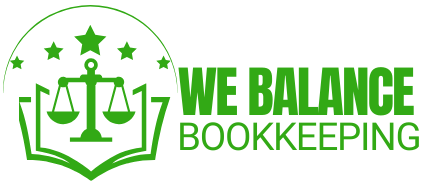Here’s everything you need to know, including reclaiming overpaid tax.
Over the course of the year, the Tax deductions can add up and the Tax overpayments can go into the thousands. I can help you complete your CIS tax return and maximise your tax rebate.
What is CIS?
CIS (Construction Industry Scheme) is a special Tax scheme that was introduced by HMRC to help end the “cash in hand” labour that was a problem in the construction industry. The CIS rules state that if you are a contractor paying other sub-contractors, CIS Tax deductions should be withheld from the sub-contractor’s invoices and paid to HMRC.
The sub-contractor when filing his Tax return can then claim the CIS deductions back and offset this against their Tax for the year. Quite commonly, after various expenses have been claimed, I find that the sub-contractor is due a CIS Tax refund. This is simply because more Tax was deducted than required.
By claiming the maximum allowable expenses, you can maximise your CIS Tax rebate at the end of the year.
How do I get Started?
First you need to get as much information about your earnings and expenses as possible. The more information I have concerning your construction work, the better the chance I have of maximising your CIS claim. Documents and records that you should be looking for would include:
- Copies of CIS Tax statements (sometimes called CIS vouchers or even pay slips)
- Details of the sites or places where you have worked
- Copies of MOT certificates showing your mileage
- Copy invoices or receipts for expenses (this can be a lot)
- Invoices or receipts for tools and equipment
- In some cases, copies of your bank statements
The list of expenses you can claim when you’re self-employed as a contractor is quite extensive, hence the more information I have, the better it is for yourself. Don’t worry, I will run you through what can be claimed, and what can’t.
What Records Should I Keep?
You should remember that keeping good records helps you claim more Tax back! Store all your receipts carefully, as every receipt could help to reduce your tax bill.
A lot of self-employed CIS workers keep their own records on an accounting spreadsheet. If you are unfamiliar with spreadsheets or need help setting one up, I have a handy CIS spreadsheet tool that will help you keep track of your allowable expenses.
Alternatively, you can simply purchase a notepad and manually record your expenses yourself.
By keeping proper CIS Tax records, it will ensure that I have the right information at hand for the preparation of your CIS Tax return.
What Expenses Can I Claim?
Working in the construction industry can involve a fair amount of costs, most of which are allowable to be offset against your income when calculating your Tax for the year. Examples of allowable expenses would include:
- Tools and equipment
- Mileage and general travelling costs
- Capital allowances for your commercial vehicle
- Clothing costs
- Materials required for the project
- Administrative costs such as stationery and telephone
- Advertising expenses
- Many other costs
When it comes to processing your CIS Tax rebate, it’s a situation where the more information supplied, the better. Having all the information concerning your subcontracting rebate will allow me to assess what is allowable, and what isn’t. My job is to obtain the largest possible Tax rebate on your behalf.
Can I make a CIS Tax Claim Myself?
Whilst filing your Self-Assessment Tax Return isn’t the most difficult process for some people, are you sure you are claiming all allowances and entitlements?
With We Balance, you can have peace of mind that I will go through your situation in fine detail ensuring that your claim is maximised to its fullest possible potential.
What is a CIS Statement?
A CIS statement is a payment and deduction statement issued by a contractor to a sub-contractor. They are usually issued on a monthly basis and summarise what payments have been made to the CIS subcontractor. They replaced the old CIS vouchers or slips.
CIS statements can be used as proof that you have paid CIS Tax on your construction earnings. It is essential that you keep them safe. If, for whatever the reason, you cannot find your CIS statements, your contractor will usually be able to re-issue copies.
The CIS statement would typically show the following details:
- Contractor details, such as name, Tax reference and address
- The month for which the statement covers
- Subcontractors details, such as name, Tax reference, address and verification number (if applicable)
What is a Subcontractor?
With reference to the CIS scheme, a sub-contractor is someone that performs construction work for a contractor and is not employed under PAYE. A subcontractor would typically invoice the contractor for their work performed, although the contractor can raise “self-billing invoices” taking this paperwork duty away from the sub-contractor. The contractor would then check the sub-contractor’s details with HMRC to confirm what Tax deduction rate should be applied.
A subcontractor is different to an employee in that often the work is project based, serving a short purpose. For example, bricklaying services for a house development project. Subcontractors would often also use their own tools and equipment and perhaps also be required to supply the materials.
Subcontractors are self-employed businesses with their own Tax returns and accounts to prepare.
How to Register as a CIS Subcontractor?
To register as a self-employed CIS subcontractor, you first need to declare you are self employed and apply for a UTR Number from HMRC.
The UTR number typically takes around two to four weeks to be issued but can take longer if HMRC are busy or have a backlog.
Once your UTR number has been issued and you are working in the Construction Industry as a subcontractor, you should then register as a self-employed CIS subcontractor with HMRC. This can be done by calling the Tax office on 0300 200 3210.
You should make sure that you have your information ready, including:
- Your intended date to start as a subcontractor
- Your National Insurance number
- Your Unique Taxpayer Reference (UTR)
If you do not register correctly as a CIS subcontractor, your Tax deduction rate may be set at 30% instead of the lower rate of 20% and you will not be able to claim this back until after April on your CIS Tax return.
What are the CIS Deduction Rates?
Three rates of CIS deduction apply to payments made in the CIS scheme:
- 20% – the most common payment for CIS registered small sized sub-contractors
- 30% – the rate applied when you are not registered as a subcontractor with HMRC, or they cannot find your record
- 0% (Gross payments) – No Tax deducted. To obtain this level of CIS registration various checks are performed by HMRC
If you find yourself paying Tax at the higher rate of 30%, you should contact HMRC immediately to have yourself correctly registered. This will allow your contractor to make payments at the standard rate of 20%.
Applying for gross CIS status can be quite cumbersome but if doing so frees up vital cash flow, then this should be applied for.
How Fast Will my Tax Come Back?
The length of time taken to get your Tax rebates depends on a few things:
- How fast you can pull the required information together
- How busy HMRC are
- The complexity of the claim
CIS Tax returns are “usually” straight forward and tend not to have issues that would cause a delay. All things being well, I would aim to have the CIS rebate filed within 48 hours of having all the information I need to submit.
Depending on what time of the year it is, you could get your repayment back within weeks, sometimes a little more than that. For example, January, February & April are busy times for HMRC and it could take them around a month to process your CIS Tax rebate. On the other hand, June to November are relatively quiet times and we have known repayments take under two weeks.
How Do I De Register as a Sub Contractor?
If you are confident that you will not be undertaking any more work as a subcontractor, you should inform HMRC at your earliest convenience so that they can remove you from the subcontractor records.
You should either do this in writing or over the phone by calling 0300 200 3210. Deregistering as a subcontractor will not deregister you from being self-employed. If you want to close your subcontract CIS business, you should note the trade cessation date on your personal Self-Assessment Tax Return. If you do not record your cessation date, HMRC will think you are still trading and will issue you Tax Returns to complete unless they are told otherwise.






